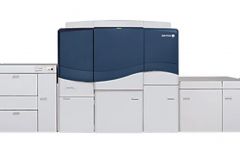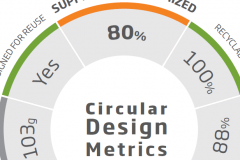Companies of all sizes need to respond quickly, and see this as both a socially responsible project and an economic opportunity. An opportunity that allows print companies to reduce costs, streamline services through more efficient and circular processes, and win new business by offering sustainable services to even the most environmentally conscious customers.
Why the industry must continue in social responsibility
Research suggests that printing companies are eager to become more sustainable. A Widthwise study showing that by 2020, three-quarters of them had obtained environmental accreditations, and 9% were working to obtain them. In addition, for this year, for nearly half of printers, the primary environmental goal was to measure and reduce carbon footprint, while 16% planned to reduce or recycle internal waste.
In addition, there is an urgent and growing need to find alternatives to materials such as PVC, whose manufacture and disposal are known to be environmentally hazardous due to the release of harmful chemicals.
Alongside the major brands, the printing industry is responding, with many suppliers developing more environmentally friendly media.
Make your printing company's social responsibility more profitable
While the printing industry is clearly improving its sustainable practices, it is still in the early stages of turning social responsibility into a business advantage.
However, there are many ways for printing companies, large and small, to make green practices pay off. These include reducing energy consumption by using more efficient printers. Or printers that use recycled or recyclable materials and less packaging at a reduced cost.
It can also be interesting to produce its own energy internally through solar energy. Or use dashboard tools to measure metrics in order to identify and improve efficiency to track ROI, so that the company can make more informed purchasing decisions.
In addition, the development of environmentally friendly printing services can be a competitive differentiator among environmentally conscious customers. For example, printers can have their sustainability practices certified through accreditations such as the U.S.-based Sustainable Green Printing Partnership (SGP).
Protecting your employees is more important than ever
Employee safety is an important aspect of corporate social responsibility and a business imperative. The most common types of accidents in the printing industry are due to manual handling (27%), slips and trips (22%) and machinery (22%). So, in addition to making print services more environmentally friendly, print service providers also need to improve employee safety by training, reducing risk and avoiding manual actions where possible in favor of digital and mechanical automation.
While solvents and UV light can irritate the skin and cause dermatitis, companies should look to less harmful chemicals and water-based inks, which produce healthier prints without compromising performance.
Governments have put in place strict guidelines for the printing industry. These regulations are formulated to protect the legitimate rights and interests of printing operators, as well as social and public interests. Also, professional organizations and committees around the world monitor compliance with legislation adopted for the safety of workers.
By protecting employees and developing a protective and healthy environment, print service providers increase employee safety, satisfaction and retention, for the good of the company as a whole.
Meeting the challenge of change
Companies in the printing industry have a strong incentive to change. They have shown resilience in recent years, adapting to the market, transforming digitally and adopting sustainability practices. The next few years will be critical to continuing the environmental, societal and economic progress that has been made, in order to create a promising future.












